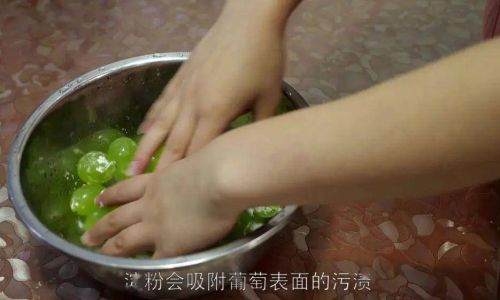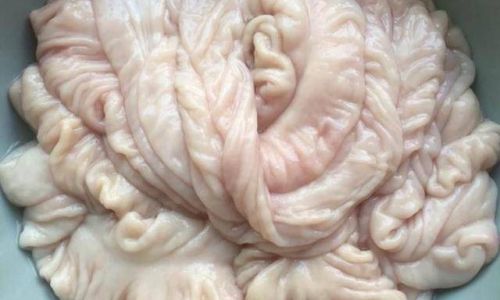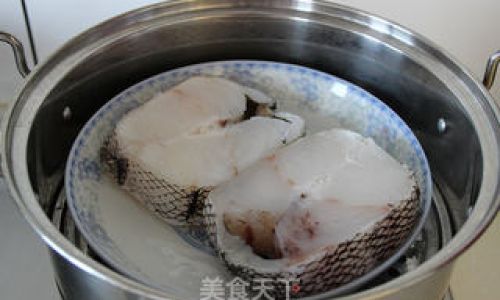Introduction

Tofu pudding, also known as douhua in Chinese, is a beloved traditional dessert enjoyed across East Asia. Its delicate texture and mild flavor make it an ideal choice for breakfast, dessert, or even a light snack. While the basic ingredients are simple—soy milk and a coagulant like gypsum or nigari—achieving the perfect balance of silkiness and bounce can be a challenging endeavor for even the most seasoned chefs. This comprehensive guide aims to demystify the process and provide you with actionable tips and tricks to make tofu pudding that is both tender and resilient.
Understanding the Ingredients
Before diving into the preparation, let’s delve into the key components that form the foundation of tofu pudding: soy milk and the coagulant.
Soy Milk
- Quality of Soybeans: Start with high-quality, non-GMO soybeans. Fresh, organic soybeans yield the best-tasting soy milk, which is crucial for the final texture and flavor of your tofu pudding.
- Soaking: Soak the soybeans overnight or for at least 8 hours. This helps soften the beans and makes them easier to blend into a smooth milk.
- Grinding and Boiling: Use a high-speed blender or a soy milk maker to grind the soaked beans with water. The ratio of beans to water can vary, but a common ratio is 1 part beans to 4 parts water. Boil the resulting mixture, skimming off any foam that rises to the surface. This step ensures a smooth, creamy soy milk.
Coagulant
- Types: The most common coagulants used for tofu pudding are gypsum (calcium sulfate) and nigari (magnesium chloride). Gypsum tends to produce a softer, silkier tofu pudding, while nigari yields a firmer, more bouncy texture.
- Preparation: Dissolve the coagulant in a small amount of cold water before use. This ensures even distribution and prevents lumps.
Step-by-Step Guide to Making Silken and Bouncy Tofu Pudding
Step 1: Preparing the Soy Milk
- Soaking: Begin by soaking 1 cup of soybeans in 4 cups of water for at least 8 hours or overnight.
- Rinsing: Rinse the soaked beans thoroughly under cold running water.
- Grinding: Drain the beans and place them in a blender with 4 cups of fresh water. Blend on high speed until you have a smooth, creamy mixture. For best results, blend in batches if your blender capacity is limited.
- Boiling: Pour the blended mixture into a large pot and bring it to a boil over medium-high heat. Stir occasionally to prevent sticking and skimming off any foam that forms on the surface.
- Filtering: Once boiling, turn off the heat and let the mixture cool slightly. Line a fine-mesh sieve or cheesecloth with a layer of muslin or a clean kitchen towel. Pour the soy milk through the sieve, gently stirring and pressing the solids to extract as much milk as possible. Discard the bean solids (okara).
- Adjusting Consistency: If the soy milk is too thick, add a little more water and stir well. If it’s too thin, you may need to boil it down slightly to concentrate the flavors.
Step 2: Preparing the Coagulant
- Measuring: Depending on the desired texture, measure out the appropriate amount of coagulant. For softer tofu pudding, use about 1/4 teaspoon of gypsum per cup of soy milk. For firmer, more bouncy tofu pudding, use 1/2 teaspoon of nigari per cup of soy milk.
- Dissolving: Dissolve the coagulant in 2 tablespoons of cold water. Stir until completely dissolved to avoid lumps.
Step 3: Coagulating the Soy Milk
- Heating: Reheat the soy milk to a temperature between 170°F and 180°F (77°C and 82°C). This is crucial for proper coagulation. Use a thermometer to monitor the temperature accurately.
- Pouring: Remove the soy milk from heat and quickly pour it into a heatproof container. Stir gently to avoid creating bubbles.
- Adding Coagulant: Slowly drizzle the dissolved coagulant over the surface of the soy milk in a circular motion, using a chopstick or a small spoon to gently stir the milk in the opposite direction to create a gentle swirling motion. Avoid stirring too vigorously, as this can disrupt the coagulation process.
- Waiting: Cover the container and let it sit undisturbed for about 15-20 minutes. You should see the soy milk begin to set and form a soft, jelly-like layer on top.
Step 4: Forming and Serving the Tofu Pudding
- Testing: Gently press the surface of the set soy milk with a spoon. If it feels firm and bouncy, it’s ready. If it’s still too soft, give it a few more minutes.
- Ladling: Use a ladle or a small spoon to gently scoop out the tofu pudding onto serving bowls. Be careful not to disturb the bottom layer, which may still be setting.
- Chilling: For the best texture, refrigerate the tofu pudding for at least 1 hour before serving. This helps firm it up and enhances its silky, bouncy texture.
- Serving: Top with your favorite toppings such as syrup, honey, fresh fruits, or nuts. A drizzle of sesame oil or a sprinkle of chopped green onions can also add a delightful flavor contrast.
Troubleshooting Common Issues

Tofu Pudding is Too Soft
- Possible Cause: Not enough coagulant or incorrect temperature.
- Solution: Increase the amount of coagulant slightly and ensure the soy milk reaches the correct coagulation temperature.
Tofu Pudding is Too Firm
- Possible Cause: Too much coagulant or soy milk was too hot when coagulant was added.
- Solution: Reduce the amount of coagulant and be more precise with the temperature control.
Uneven Texture
- Possible Cause: Uneven distribution of coagulant or stirring too vigorously.
- Solution: Pour the coagulant in a slow, steady stream while gently stirring in the opposite direction. Avoid creating too many bubbles.
Grainy Texture
- Possible Cause: Undissolved coagulant lumps.
- Solution: Ensure the coagulant is completely dissolved in water before adding it to the soy milk.
Enhancing Flavor and Texture
Infusing Soy Milk
- Herbs and Spices: Infuse the soy milk with herbs like vanilla beans, cinnamon sticks, or ginger slices while heating. This adds layers of flavor without overpowering the delicate taste of tofu pudding.
- Sweeteners: Add a small amount of sugar or honey to the soy milk before coagulation for a naturally sweetened tofu pudding.
Adding Texture Elements
- Fruits and Nuts: Incorporate fresh fruits, nuts, or seeds into the tofu pudding for added crunch and nutrition.
- Syrups and Sauces: Serve with a drizzle of homemade syrup, fruit sauce, or even a light sprinkling of matcha powder for a visually appealing and flavorful presentation.
Conclusion
Making tofu pudding that is both silken and bouncy is an art that requires precision, patience, and a keen understanding of the ingredients and process. By following the steps outlined in this guide, you’ll be well-equipped to create tofu pudding that not only meets but exceeds your expectations. Experiment with different coagulants, flavors, and toppings to find your perfect recipe. Remember, the key to success lies in consistent practice and attention to detail. Happy cooking!






0 comments